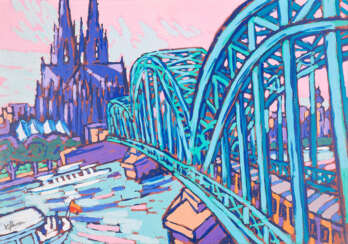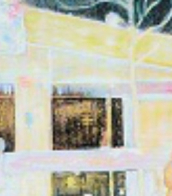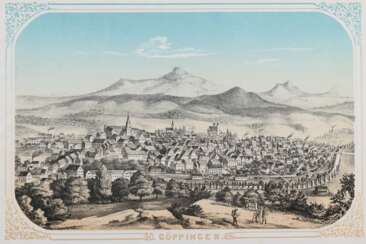köpping

Karl Köpping was a German painter and engraver. He also designed objects of art made of twisted glass.
He mainly created etchings after the well-known works of the past centuries, especially by Rembrandt, but also Hals, Gainsborough or Munkácsy. He also designed Art Nouveau art objects made of coiled glass.
He was awarded the Order of the Legion of Honour and the First Class Medal of the Munich Art Exhibition, as well as the Grand Prix of the Paris World's Fair in 1889.



.jpg)
Béla Kádár was a Hungarian painter influenced by Der Blaue Reiter, Cubism, Futurism, Neo-Primitivism, Constructivism, and Metaphysical painting.


Fritz Köthe — German painter and graphic artist, is considered one of the most important representatives of German pop art and photorealism.


K.R.H. Sonderborg (Kurt Rudolf Hoffmann) was a German painter, graphic artist, university professor and from 1980 for several years prorector of the State Academy of Fine Arts Stuttgart.


Bernhard Kuhlewein is a modern German expressionist painter.


Bernhard Kuhlewein is a modern German expressionist painter.




Fred Thieler was a German abstract artist known for his colorful, gestural paintings. He was born in Königsberg, Germany, and studied at the Academy of Fine Arts in Königsberg before moving to Berlin in 1945.
Thieler's early work was influenced by the Expressionist and Surrealist movements, but he soon developed his own unique style characterized by bold colors and dynamic brushstrokes. He often used a palette knife to apply paint to the canvas, creating thick, impasto layers that added depth and texture to his works.
Throughout his career, Thieler participated in numerous exhibitions in Germany and internationally, including the Venice Biennale and Documenta in Kassel. He was also a member of the influential German art group "Quadriga," which included artists such as Bernard Schultze, Karl Otto Götz, and Otto Greis.
In addition to painting, Thieler also worked as a graphic designer and a teacher. He was a professor at the Academy of Fine Arts in Berlin from 1965 to 1981, where he had a significant impact on the next generation of German artists.
Thieler's work can be found in many private collections and museums, including the Museum of Modern Art in New York, the Stedelijk Museum in Amsterdam, and the Museum Ludwig in Cologne.


Anton Räderscheidt was a German painter who was a leading figure of the New Objectivity. Räderscheidt was born in Cologne. His father was a schoolmaster who also wrote poetry. From 1910 to 1914, Räderscheidt studied at the Academy of Düsseldorf. He was severely wounded in the First World War, during which he fought at Verdun. After the war he returned to Cologne, where in 1919 he cofounded the artists' group Stupid with other members of the local constructivist and Dada scene. The group was short-lived, as Räderscheidt was by 1920 abandoning constructivism for a magic realist style. In 1925 he participated in the Neue Sachlichkeit ("New Objectivity") exhibition at the Mannheim Kunsthalle.


Hermann Grobe was a German maritime painter.
He studied at the Munich and Düsseldorf Art Academies. His favorite subject for Grobe was the sea and everything connected with it. He painted a lot of pictures with ships on the pier and everyday scenes on the shore, sailors on the shore and fishing boats.


Theodor Franz Zimmermann was an Austrian painter known for his dynamic hunting scenes with horses and dogs.






































































